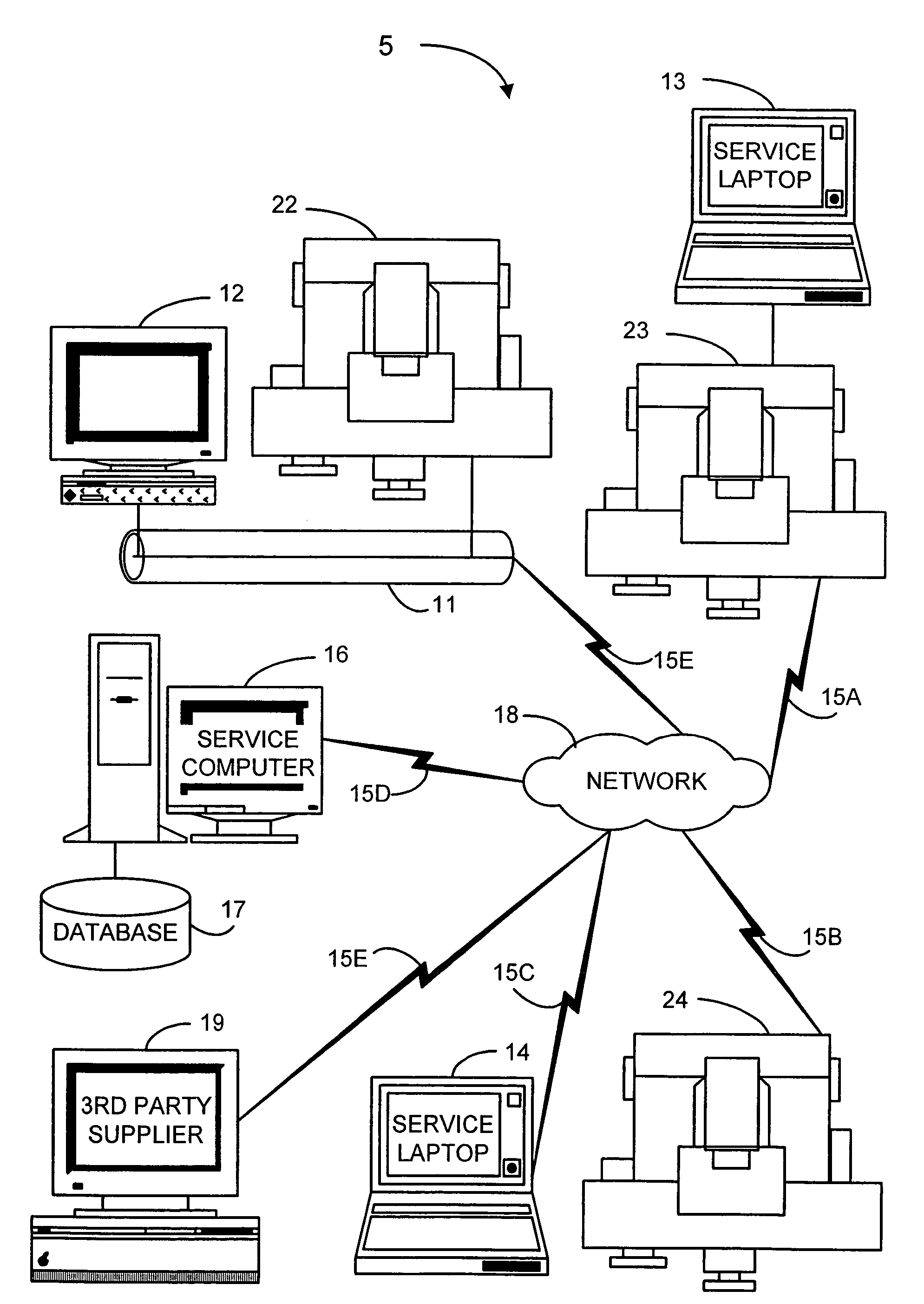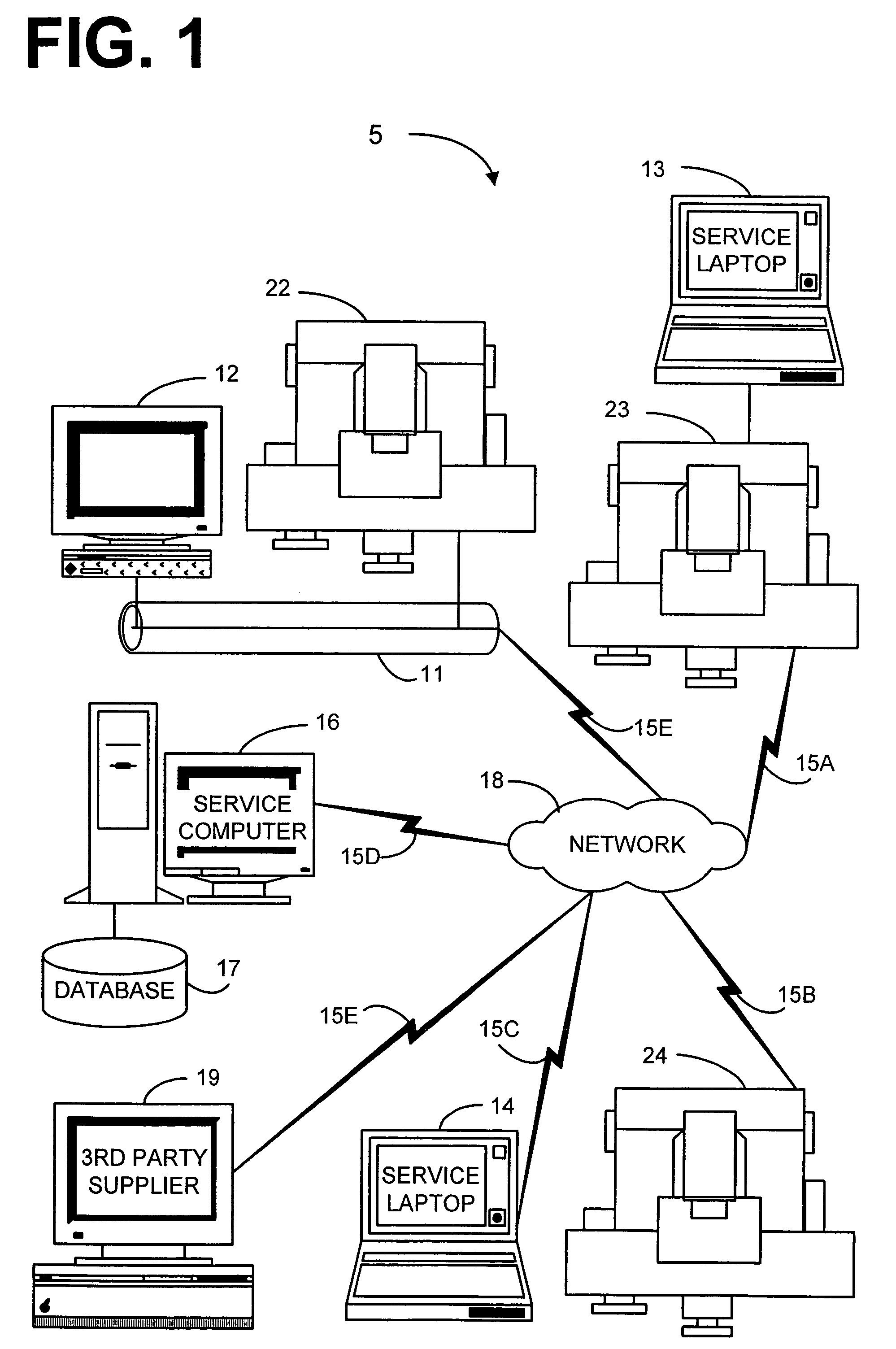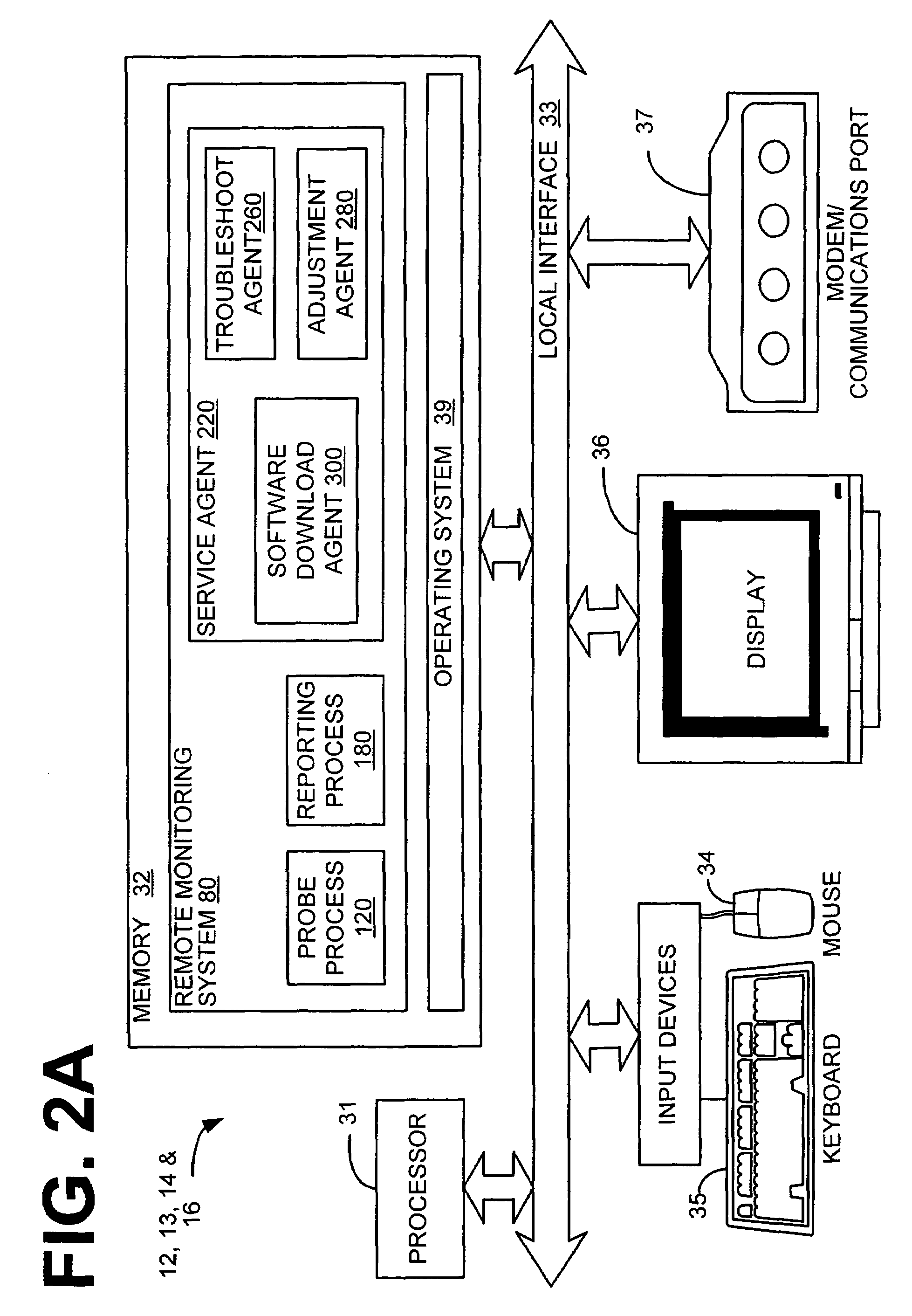However, in the instances where the
machine experiences a problem or there is insufficient
system control, the operator must then solve the problem or contact others for help.
With the lost productivity and opportunity cost of some of the machines available today, it is extremely costly to have the
machine down until a
service engineer can be dispatched to the site of the malfunctioning
machine.
Likewise, actions to update, change, correct or otherwise modify the machine can result in unwanted down time.
Moreover, it can be very expensive to dispatch a
service engineer to perform the update, change or modification to the machine.
Thus, heretofore an unaddressed need exists in the industry to address the aforementioned deficiencies quickly and efficiently.
The ability to control manufacturing devices such as foam-in-bag dispensing systems, which feature a lot of simultaneously operating systems and the potential for any one of those sub-systems to have a problem or go out of a preferred operating range, is also problematic in the associated industry.
Further, the control units used on manufacturing device such as foam-in-bag dispensers are problematic in the sense of not providing an efficient control panel with readily and accurately manipulated control buttons.
A particular problem associated with certain foams is that, once mixed, the organic resin and polyisocyanate generally react relatively rapidly so that their foam product tends to accumulate in all openings through which the material passes.
As a result, the foamable composition, which is often dispensed as a somewhat
viscous liquid, tends to adhere to objects that it strikes and then harden in place.
Many of these
adhesive foamable compositions tenaciously stick to the contact surface making removal particularly difficult.
Solvents are often utilized in an effort to remove the hardened foamable composition from surfaces not intended for contact, but even with solvents (particularly when considering the limitations on the type of solvents suited for worker contact or
exposure) this can prove to be a difficult task.
For example, a “foam-up” in a foam-in-bag dispenser, where the mixed material is not properly confined within a receiving bag, can lead to foam hardening in every nook and cranny of the dispensing system making complete removal not reasonably attainable, particularly when considering the configuration of the prior art systems.
This cold flow
distortion of the Teflon is both beneficial (e.g., allowing for the conformance of material about surfaces intended to be sealed off) and a cause of several problems, including the potential for the loss of the fit between the bore and the valving rod as well as the fit between the openings (e.g., ports) through which the separate precursors enter the bore for mixing and then dispensing.
Under these prior art systems, however, over time the sealing quality of the core is lost at least to some extent allowing for an initial build up of the hardenable material which can lead to a cycle of seal degradation and worsening build up of hardened material.
This in turn can lead to a variety of problems including the partial blockage of chemical inlet ports so as to alter the desired flow mix and degrade the quality of foam produced.
Such buildups cause spraying in the output
stream, and dispensing of the mixture in an improper ratio.
The build up of hardened material can also lead to partial blockage of the dispenser's exit outlet causing a misaiming of the dispensed flow into contact with an undesirable surface (e.g., the operator or various nooks and crannies in the dispenser).
Another source of improper foam output is found in a partially or completely blocked off dispenser outlet tip that, if occurs, can lead the foam spray in undesirable areas or system shutdown if the outlet becomes so blocked as to preclude output.
However, over time these tips tend to load up with hardened foam and eventually become ineffective.
The build of hardened /
adhesive material over time can lead to additional problems such as the valve rod and even a purge only rod, becoming so adhered within
its region of reciprocal travel that either the driver mechanism is unable to move the rod (leading to an oft seen
shut down signal generation in many common prior art systems) or a component along the drive
train breaks off which is often the annular recessed valve rod engagement location relative to some prior art designs or simply wears out as in gear slippage.
Thus, even with a brand new dispenser, there are additional requirements involved in attempting to achieve a desired foam product.
Thus, many prior art systems failed to have satisfactory “CE” levels and failed the CE European certificates program for
electromagnetic noise levels.
In addition to the common occurrence of foam dispenser system lock up, cleaning
downtime requirements, poor mix performance in prior art foam-in-bag systems, a dispenser system featuring an apparatus for automatically fabricating foam filled bags introduces some added complexity and operator problems.
For example, an automated foam-in-bag system adds additional complexity relative to film supply, film tracking and tensioning, bag sealing /
cutting (e.g., from the stand point of a proper temperature cutter / sealer or proper cutter / sealer positioning and compression levels relative to the bag being formed), bag venting, film feed blockage.
Thus, in addition to the variety of problems associated with the prior art attempts to provide chemicals to the dispenser in the proper rate, keeping the dispenser
cartridge operational, and feeding film properly (e.g., positioning and tension), the prior art foam-in-bag systems also represent a particular source of additional problems for the operators.
Additional problems include, for example, attempting to understand and operate a highly complicated, multi-component
assembly for feeding, sealing, tracking and / or supplying film to the bag formation area; high breakdown or misadjustment occurrence due to the number of components and complex arrangement of the components;
poor quality bag formation, often associated with poor film tracking performance, difficulty in achieving proper bag seals and cuts, particularly when taking into consideration the degrading and
contamination of the often used heater wires due to, for example, foam build up and the inability to accurately monitor current heated wire temperature application, difficulty in formation and maintaining clear bag vent holes, as well as the inevitable foam
contamination derivable from a number of sources such as the dispenser and / or bag leakage, and
clean up requirements in general and when foam
spillage occurs.
Many prior art foam-in-bag systems and other automated dispending systems have shown in the field to have high service requirements due to, for example, breakdowns and rapid supply usage requirements (e.g., film,
solvent, precursor chemicals, etc.).
The prior art systems suffer from the problem of difficult and often non-adequate servicing which can be operator or service representative induced (e.g., failing to monitor own supply levels (e.g.,
solvent supply) or anticipating level of usage, or difficulty in responding timely to service requests which are often on an emergency or rush basis as any down time can be highly disruptive to an operator in timely meeting orders).
 Login to View More
Login to View More 


